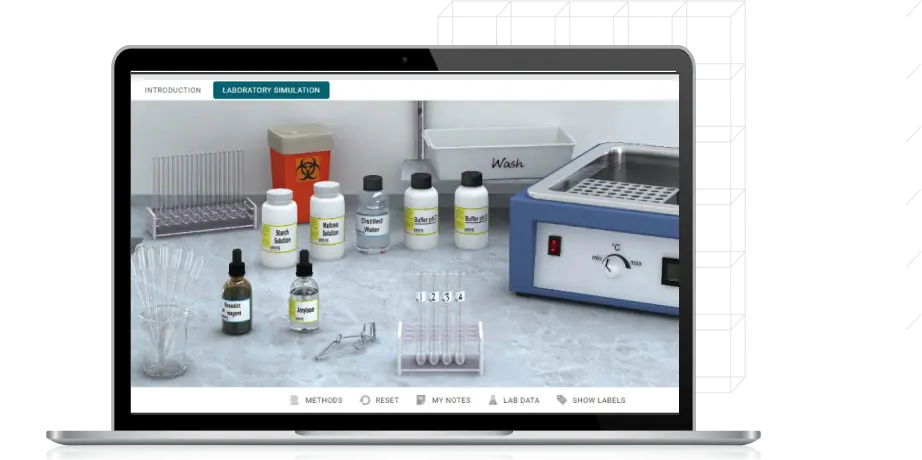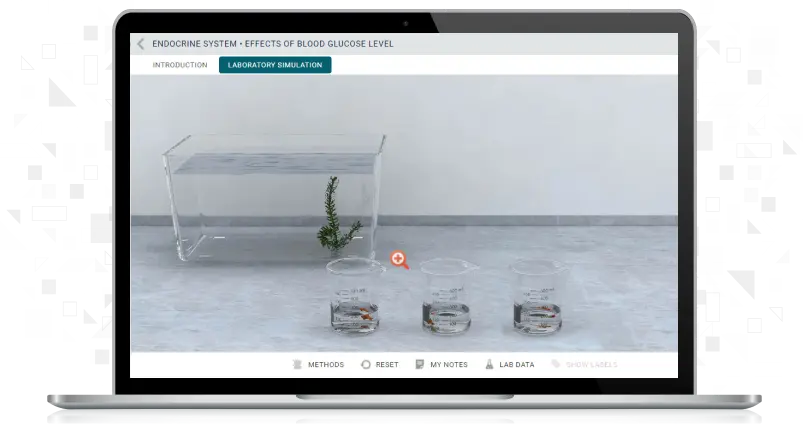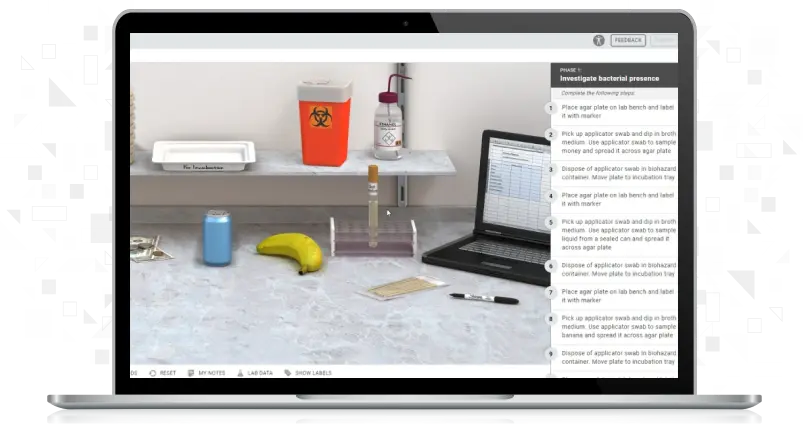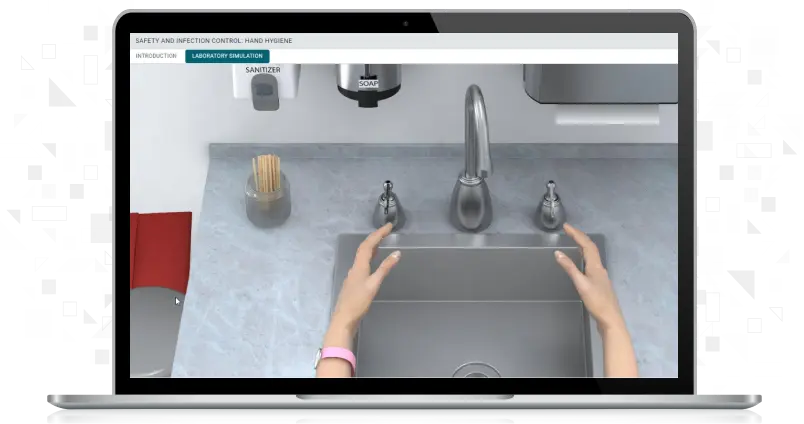My Account Details
Nutrition
From cellular structure to digestion, explore the fascinating science of human nutrition through a state-of-the-art laboratory experience.

Featured Simulations for Nutrition

Endocrine System: Effects of Blood Glucose Level , Link will open in a new window
In this simulation, fish serve as the model organism to observe the effects of insulin and glucose on level of activity and alertness.

Ubiquity of Microorganisms , Link will open in a new window
Sampling Surfaces for Bacteria: In this simulation, you will isolate bacteria from various objects and grow them on an agar plate.

Lab Safety: Handwashing Procedure , Link will open in a new window
In this simulation, you will learn the appropriate lab etiquette and regulations that are important to maintain your own safety and the safety of others around you.
See the growing list of Nutrition simulations here:
1st Lab Tutorial:
Applying the Scientific Method:
Aseptic Technique:
• Broth Culture to Sterile Agar Plate
• Broth Culture to Sterile Broth
• Slant Culture to Sterile Agar Slant
Bacterial Genetics:
• Polymerase Chain Reaction (PCR)
Basic Chemistry:
• Synthesis of Calcium Carbonate
Blood:
• Differential White Blood Cell Count
Cardiovascular Physiology:
Cell Division:
Cell Structure:
• Examining Plant & Animal Cells
Cellular Respiration:
• Measuring Energy Production in Plants
Chemical Composition of Cells:
Control of Microbial Growth:
• Effect of Antiseptics and Disinfectants
• Antimicrobial Sensitivity Testing (Kirby-Bauer Method)
Diffusion:
• Effect of Concentration on the Rate of Diffusion in a Semisolid
• Effect of Density of Media on the Rate of Diffusion
• Effect of Molecular Weight on the Rate of Diffusion in Air
• Diffusion Across a Selectively Permeable Membrane
Digestive System:
Dissections:
• Dissection Tutorial for Animals and Plants
DNA Biology and Technology:
• Enzyme-Linked Immunosorbent Assay (ELISA) Testing (New)
• Transcription, Translation, and Mutation
Electromyography:
Endocrine System:
• Influence of Thyroid Hormone on Temperature Regulation
• Effects of Blood Glucose Level
Evidence of Evolution:
• Fossils and Comparative Anatomy
Eye and Vision:
How Enzymes Work:
Human Genetics:
• Chromosomal Inheritance During Meiosis
Isolation Methods:
• Quadrant Streak Plate Method
• Quantitative Dilution of Bacteria
• Quantification by Colony Counting
Lab Safety:
Mendelian Genetics:
Metric Measurement:
Microbial Growth:
• Oxygen Requirements & Anaerobic Jar
• Oxygen Requirements and Fluid Thioglycolate Medium Tubes
Microscopy:
• Operation of a Brightfield Microscope
Natural Selection:
• Antibiotic-Resistant Bacteria
• Natural Selection in Insects
Nervous System:
• Demonstrate Monosynaptic Reflexes
Organismal Diversity
• Flatworms, Rotifers and Water Bears
Osmosis:
• Movement of Water Across a Selectively Permeable Membrane
pH Balance:
Photosynthesis:
• Comparing Green and Blue Light
• Determining Rate in White Light
• Monitoring Photosynthesis with Carbon Dioxide Uptake
Plants
• Gravitropism and Phototropism (Mustard Plant Seedlings)
Population Biology
Respiratory System:
Sampling Ecosystems:
Skeletal Muscle:
• Shoulder & Elbow Movement Exercise
Spectrophotometry
• Apply Beer's Law to Determine Concentration of Dye
Staining:
Transgenic Organisms
Ubiquity of Microorganisms
Unknown Bacterial Identification
Urinary System:
